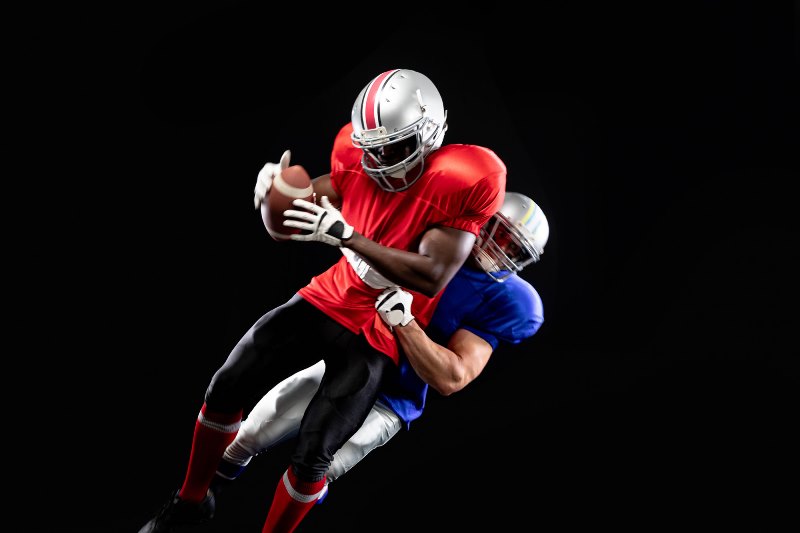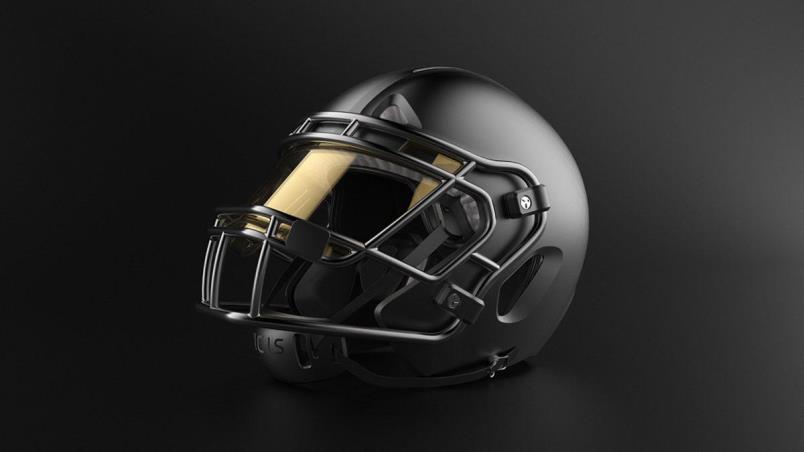Football has long been America’s most beloved sport, captivating millions with its blend of athleticism, strategy, and raw excitement. But beneath the cheers and touchdowns lies a darker reality that’s been gaining increasing attention in recent years. We’re talking about Chronic Traumatic Encephalopathy, or CTE in Football – a degenerative brain disease that’s become closely associated with football and other contact sports. In this comprehensive guide, we’ll dive deep into what CTE is, how it affects football players, and what’s being done to address this serious health concern.
The Basics: What Exactly is CTE?

Defining CTE
CTE is a progressive brain condition caused by repeated blows to the head over time. Unlike a concussion, which is an acute injury, CTE develops slowly, often showing no symptoms until years after the initial trauma. It’s characterised by the buildup of an abnormal protein called tau in the brain, which can lead to a variety of cognitive, behavioural, and physical symptoms.
A Brief History of CTE in Football
The link between football and brain damage isn’t new, but our understanding of CTE has evolved dramatically in recent decades. Let’s take a quick look at some key milestones:
- 1928: “Punch drunk syndrome” is first described in boxers
- 2002: Dr. Bennet Omalu identifies CTE in a former NFL player
- 2007: First living diagnosis of CTE in a former NFL player
- 2017: Study finds CTE in 99% of donated NFL player brains
The Science Behind CTE: How Football Impacts the Brain
The Mechanics of Brain Injury in Football
To understand CTE, we need to grasp how football can damage the brain. It’s not just about concussions – even seemingly routine hits can contribute to long-term damage.
Subconcussive Impacts
These are hits that don’t cause immediate symptoms but can still rattle the brain inside the skull. Over time, these impacts can add up, potentially leading to CTE.
The Role of Acceleration and Deceleration
The rapid starting and stopping motions in football can cause the brain to shift within the skull, leading to damage even without direct head contact.
The Progression of CTE
CTE doesn’t happen overnight. It’s a slow process that unfolds over years or even decades. Here’s a simplified breakdown of how it typically progresses:
- Initial trauma to the brain
- Buildup of tau protein
- Spread of tau throughout the brain
- Brain tissue begins to degenerate
- Symptoms start to appear
Recognizing the Signs: Symptoms of CTE
Early Warning Signs
CTE can be tricky to spot early on, but some potential red flags include:
- Mood changes
- Short-term memory problems
- Difficulty concentrating
Advanced Symptoms
As CTE progresses, more severe symptoms may develop:
- Aggression and impulsivity
- Depression and suicidal thoughts
- Cognitive decline
- Motor impairment
The Emotional Toll: CTE’s Impact on Mental Health
One of the most devastating aspects of CTE is its effect on mental health. Many former players struggle with depression, anxiety, and mood swings. In severe cases, CTE has been linked to suicide.
Who’s at Risk? CTE in Different Levels of Football

Youth Football: Starting Young, at What Cost?
We often think of CTE as a problem for pro athletes, but research suggests that even youth football players may be at risk. The developing brain is especially vulnerable to trauma, raising concerns about kids starting tackle football at a young age.
High School and College Players: The Unseen Danger
While most attention focuses on the NFL, the vast majority of football players never go pro. High school and college athletes can also be at risk for CTE, especially if they’ve been playing since childhood.
Professional Football: Where the Risks are Highest
NFL players, with their years of high-level play and intense physicality, face the highest risk of developing CTE. Studies have found alarmingly high rates of CTE in former NFL players’ brains.
Diagnosing the Invisible: The Challenges of Identifying CTE
Current Diagnostic Methods
One of the biggest hurdles in addressing CTE is that it can only be definitively diagnosed after death, through brain tissue examination. However, researchers are working on ways to detect CTE in living patients.
Promising Research: PET Scans and Biomarkers
New imaging techniques and blood tests show promise for identifying CTE in living individuals. These advancements could revolutionise how we diagnose and treat the condition.
Prevention and Protection: Efforts to Reduce CTE Risk in Football
Rule Changes: Making the Game Safer
In recent years, football at all levels has implemented rule changes aimed at reducing head injuries. These include:
- Stricter penalties for targeting
- Changes to kickoff rules
- Limits on contact in practice
Helmet Technology: Can Better Equipment Help?
While no helmet can completely prevent concussions, advances in helmet design may help reduce the risk of brain injury. We’ll explore some of the latest innovations in protective gear.
Training Techniques: Teaching Safer Play
Proper tackling technique and neck strengthening exercises are being emphasised to help players protect themselves on the field.
Beyond Football: CTE in Other Sports and Activities
Combat Sports: Boxing and MMA
While football has been the focus of much CTE research, other contact sports like boxing and mixed martial arts also carry significant risks.
Unexpected Sources: CTE in Non-Athletes
Interestingly, CTE isn’t limited to sports. It’s been found in victims of domestic violence, military veterans, and even individuals with no history of repetitive head trauma.
The Broader Impact: How CTE Affects Families and Society
Family Struggles: Living with a CTE Patient
The effects of CTE ripple far beyond the individual, often placing enormous strain on families and caregivers.
Economic Considerations: The Cost of CTE
From medical bills to lost productivity, the economic impact of CTE can be substantial for individuals and society as a whole.
Looking to the Future: The Ongoing Battle Against CTE
Promising Research Directions
Scientists are working tirelessly to better understand CTE and develop potential treatments. Some areas of focus include:
- Tau-targeting drugs
- Stem cell therapies
- Neuroprotective compounds
The Ethical Dilemma: Balancing Safety and Sport
As our understanding of CTE grows, we’re faced with difficult questions about the future of football and other contact sports. How do we balance the cultural importance and enjoyment of these games with the need to protect athletes’ long-term health?
Conclusion: A Complex Issue with No Easy Answers
CTE in football is a multifaceted problem that touches on issues of health, culture, economics, and ethics. While significant progress has been made in understanding and addressing this condition, there’s still much work to be done. As fans, players, and members of society, we all have a stake in finding solutions that allow us to enjoy the sports we love while prioritising the well-being of those who play them.
FAQs About CTE in Football
What Does CTE Stand For in Football?
Chronic traumatic encephalopathy, often known as CTE, is a degenerative disease of the brain that is believed to be brought on by repetitive blows to the head as well as recurrent bouts of concussion. It is most often seen in athletes that participate in contact sports, such as boxing and American football. The majority of the studies that have been conducted were conducted on formerly active athletes.
What Are the Differences between Alzheimer’s disease and CTE?
There are a number of parallels between Alzheimer’s disease and CTE, but there are also substantial distinctions. CTE manifests itself often sooner (after the age of forty) than AD (sixty years of age or older).
The first and most evident symptoms of Alzheimer’s disease are memory deficits, but the earliest indications of chronic traumatic encephalopathy are often difficulties with thinking, judgment, problem-solving, anger, and impulse control.
Which sport has the highest CTE?
The vast majority of athletes who have been diagnosed with chronic traumatic encephalopathy have participated in contact sports such as boxing, American football, wrestling, ice hockey, mixed martial arts, rugby, or soccer. Other risk factors include having a history of domestic abuse, serving in the military, and repeatedly hitting one’s skull against anything.
What does having CTE feel like?
Memory loss, confusion, poor judgment, difficulties with impulse control, anger, sadness, anxiety, suicidality, Parkinsonism, and finally progressive dementia are some of the symptoms associated with chronic traumatic encephalopathy (CTE). Typically, the onset of these symptoms occurs years or even decades after the previous head trauma or the cessation of vigorous sports participation.
Can CTE be reversed or cured?
Currently, there is no known cure for CTE. Once the damage has occurred, it can’t be reversed. Research is ongoing to develop treatments that may slow its progression.
Are all football players guaranteed to develop CTE?
No, not all football players will develop CTE. The risk increases with longer playing careers and more exposure to head impacts, but many players never develop the condition.
How is CTE different from a concussion?
While both involve brain trauma, a concussion is an acute injury with immediate symptoms, while CTE is a progressive disease that develops over time due to repeated impacts.
Can children get CTE from playing youth football?
While rare, cases of CTE have been found in young athletes. The developing brain may be more vulnerable to trauma, which is why there’s growing concern about tackle football for young children.
What can I do to reduce my risk of CTE if I play football?
While there’s no guaranteed way to prevent CTE, you can reduce your risk by using proper tackling technique, wearing well-fitted protective gear, and immediately reporting any concussion symptoms.


